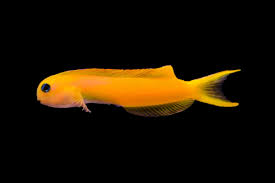The role of the dragon in Feng Shui and Chinese belief systems is both profound and multifaceted
 The role of the dragon in Feng Shui and Chinese belief systems is both profound and multifaceted, embodying power, protection, and prosperity. In traditional Chinese culture, the dragon is regarded as a sacred symbol, often representing an essential balance between heaven and earth, the elements, and human existence. As one of the most significant creatures in Chinese mythology, the dragon’s influence extends far beyond folklore and into the practice of Feng Shui and religious rituals.
The role of the dragon in Feng Shui and Chinese belief systems is both profound and multifaceted, embodying power, protection, and prosperity. In traditional Chinese culture, the dragon is regarded as a sacred symbol, often representing an essential balance between heaven and earth, the elements, and human existence. As one of the most significant creatures in Chinese mythology, the dragon’s influence extends far beyond folklore and into the practice of Feng Shui and religious rituals.
Feng Shui, the ancient Chinese practice of arranging the environment to harmonize with natural forces, integrates the dragon as a key element in creating balanced and auspicious spaces. The dragon’s role in Feng Shui is multifaceted, symbolizing the flow of energy, or “qi,” and acting as a powerful guardian and bringer of good fortune. This majestic creature is often invoked to encourage vitality and good health, wealth, and the alignment of one’s environment with cosmic energies.
In Feng Shui, the dragon is seen as a symbol of strength and success. When placed in strategic areas of the home or workplace, it is believed to activate positive energy and promote prosperity. The dragon is most often associated with the east and southeast areas of a home or building, as these directions are linked with growth, wealth, and vitality. The eastern sector, in particular, is known as the “dragon’s lair,” where the dragon is thought to provide protection and strength to the household or business. Additionally, dragons are often depicted alongside other elements like water and mountains, which enhance their ability to harness the forces of nature and channel them into positive outcomes.
The presence of a dragon in a Feng Shui layout can be particularly impactful when it is placed near water features such as fountains or aquariums. In Chinese culture, water is closely associated with the flow of wealth and prosperity, and the dragon’s connection to water magnifies its influence, making it a favorable symbol for attracting abundance. However, it is important to note that the dragon’s presence must be balanced with other symbols of harmony, as an overabundance of dragon imagery or energy in a space can lead to restlessness or excessive ambition.
Beyond its role in Feng Shui, the dragon is deeply embedded in Chinese religious and spiritual practices, where it is regarded as a celestial being with the power to bring rain, fertility, and blessings. In ancient China, emperors considered themselves the “Sons of Heaven,” and their authority was often symbolized by the dragon. The imperial dragon, a golden dragon with five claws, was emblazoned on royal robes and flags, reinforcing the divine right to rule and the emperor’s connection to the natural and cosmic forces.
The dragon’s role in Chinese belief systems extends into the realm of ancestor worship and ritual practices. It is often seen as a protector of the family and a guardian of ancestral spirits. In traditional Chinese festivals like the Lunar New Year, dragon dances are performed to ward off evil spirits and bring good luck and fortune. These dances, accompanied by loud music and firecrackers, are meant to summon the dragon’s protective energy and ensure a prosperous year ahead.
In addition to its role in Feng Shui and religious rituals, the dragon also holds a significant place in Chinese astrology. In the Chinese zodiac, the dragon is one of the twelve animal signs, known for its qualities of leadership, courage, and determination. People born under the sign of the dragon are believed to possess traits of strength, resilience, and creativity. The dragon is seen as a symbol of the dynamic energy that drives progress and success, making it a highly auspicious sign in Chinese astrology.
The concept of the dragon as a symbol of balance is central to its importance in both Feng Shui and Chinese belief systems. The dragon is often depicted with a pearl or orb in its claws, symbolizing the balance between the spiritual and physical realms. The pearl represents wisdom, enlightenment, and the attainment of inner harmony, while the dragon’s role as a guardian of this pearl emphasizes the need for strength and protection in the pursuit of spiritual growth. This balance between the material and spiritual worlds reflects the broader principles of Feng Shui, which emphasizes the flow of energy between the natural elements and human life.
Furthermore, the dragon’s connection to the five elements of Chinese philosophy—wood, fire, earth, metal, and water—illustrates its role in harmonizing the forces of nature. In Feng Shui, these elements are crucial to creating a balanced and prosperous environment. The dragon, as a creature that can manipulate these elements, is believed to help balance and activate the energies of the environment, leading to a harmonious and fruitful life.
In Chinese culture, the dragon is often paired with other symbolic creatures, such as the phoenix, to represent the union of opposites. The dragon and phoenix together symbolize the perfect balance between masculine and feminine energies, strength and grace, and activity and rest. This pairing is often used in wedding decorations and rituals, where it represents the harmonious union of two individuals and the blessings of prosperity and happiness for the couple.
One of the key aspects of the dragon’s role in Chinese belief systems is its connection to immortality and longevity. In many stories and legends, the dragon is portrayed as a creature that can live for thousands of years, symbolizing eternal life and vitality. This association with immortality has made the dragon a powerful symbol in Chinese medicine and health practices, where it is believed to promote longevity and well-being. In Feng Shui, incorporating dragon imagery or symbols into the home is thought to bring protection against illness and extend the lives of those who dwell within.
The dragon’s role in Feng Shui and Chinese beliefs is also linked to the concept of transformation. As a shape-shifting creature capable of changing form, the dragon represents the ability to adapt and evolve. In this sense, the dragon embodies the idea of personal and spiritual growth, encouraging individuals to embrace change and seek new opportunities. This transformative energy is reflected in the practice of Feng Shui, which encourages individuals to create spaces that support growth, success, and harmony by aligning their environment with positive energy.
Dragons are also seen as symbols of wisdom and knowledge, often depicted as guardians of sacred texts or ancient teachings. In this context, the dragon represents the pursuit of enlightenment and the acquisition of wisdom through self-discipline and learning. Its connection to the heavens and the cosmic forces further emphasizes its association with higher knowledge and spiritual awareness.
The dragon’s symbolic power is also tied to its role as a protector of the home and family. In many Feng Shui practices, dragon statues are placed at entrances or near windows to safeguard against negative energies and protect the household from harm. This protective function of the dragon extends beyond the physical realm, symbolizing the safeguarding of emotional and spiritual well-being. Families who incorporate dragon symbols into their living spaces are believed to enjoy good fortune, safety, and happiness.
The dragon’s role in Feng Shui and Chinese beliefs is a reflection of its deep-rooted significance in Chinese culture. Its power to bring prosperity, protection, and balance is revered, making it one of the most important symbols in the practice of Feng Shui. Whether used to activate positive energy in a space, to seek protection for the family, or to symbolize wisdom and transformation, the dragon continues to play a central role in Chinese spiritual and cultural traditions. By understanding the role of the dragon in these practices, individuals can harness its power to create harmonious environments, invite prosperity, and foster personal growth and well-being.


